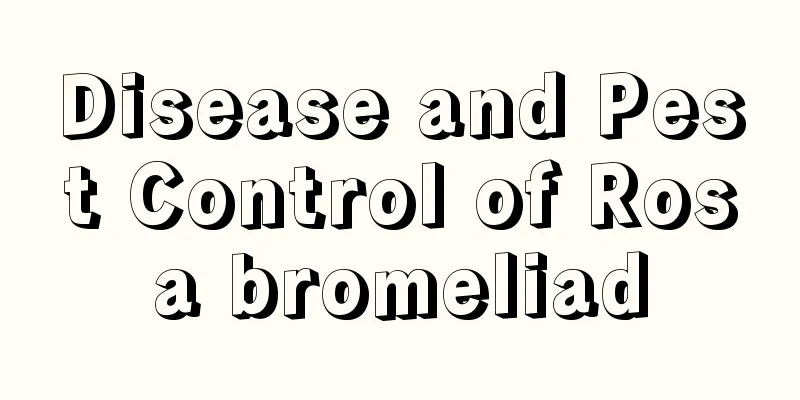Disease and Pest Control of Rosa bromeliad

1. Powdery mildew1. SymptomsWhite mildew spots will grow on the leaves, and large diseased leaves will eventually turn brown. When young leaves are infected, they will turn purple-red and eventually be covered with a layer of white powder. In severe cases, the leaves will gradually wither. 2. ReasonsBecause the bacteria overwinters in the plants, the disease will occur when the temperature rises above 20 degrees, so April to May and September to October are the peak periods of the disease. In other words, the disease of roses is closely related to the temperature. 3. How to preventWe should choose rose varieties that are resistant to powdery mildew for planting. At the same time, we should prune them in winter and remove diseased branches in time to prevent roses from getting sick at the source. 4. NotesTo reduce diseases, proper ventilation and light transmission are required, and less nitrogen fertilizer should be applied. When using medications, pay attention to the safe interval period and do not increase the dosage or shorten the interval period arbitrarily. 2. Pests1. ScarabAnyone who has raised this plant should have seen beetles on the leaves. People who grow it year-round may say that this is a sign of health, meaning that the plant has not been sprayed with pesticides. However, we should know that if a plant has a beetle, it does not matter. But too many insect pests would be a disaster, as beetles like to eat the rhizomes and leaves of roses. It will seriously affect the yield and quality of flowers. Prevention and control methods: You can use lights, willows, etc. to attract beetles and thus reduce their numbers. 2. PterocarpusWhen the plants are older, they will attract the rose moth to a great extent. Generally, rose insect infestations are mainly concentrated in the hot summer, and the most serious period is late summer. The high temperature has a positive effect on the development of the rose moth. The caterpillar moth will eat the leaves, and the plant will not have the tools for photosynthesis and growth, let alone growth. If the leaves get sick during this period, the flower may suffer heavy losses and unfortunately die. Prevention and control methods: Check for insect eggs in time during winter and remove them in time. |
<<: Disease and Pest Control of Clivia miniata
>>: Disease and Pest Control of Emei Rose
Recommend
Loquat tree grafting method
1. Grafting method 1. Time: Grafting can be done ...
If you place a pot of red flowers at this location in your home, you will have good fortune and luck in love!
East position - red flowers Feng Shui Benefits Th...
Bitter melon planting technology and management methods
Bitter melon is not only a nutritious and high-yi...
How to prune Phalaenopsis in summer
1. Two cutting methods The flowering period of Ph...
Soak these few bottles of water now and you won’t need to buy flower fertilizer in the fall!
Soybean cake fertilizer Bean cake fertilizer is r...
What kind of pot should I use for potted creepers? Will it climb in a pot?
1. What basin to use When growing creeper in a po...
Can I plant bamboo on the roof?
Can bamboo be planted on the roof? Bamboo can be ...
When is the best time to sow Cassia seeds?
Cassia seed sowing time Cassia seed is an herbace...
Do I need to soak peanut seeds when planting them?
Peanuts are one of the four major oil crops in th...
Under what conditions will Nandina domestica turn red
Plant varieties First of all, we should know that...
The growth environment and characteristics of red spider lily
The growth environment conditions and requirement...
The growing environment and local conditions of pitaya
Dragon fruit growth environment and conditions Dr...
Bitter melon planting method and time
Bitter melon planting time Bitter melon can be pl...
How to grow Wisteria multiflora
1. Soil The soil requirements of multi-flowered w...
Can Gardenia purify the air?
1. Is it possible? Gardenia can purify the air an...









